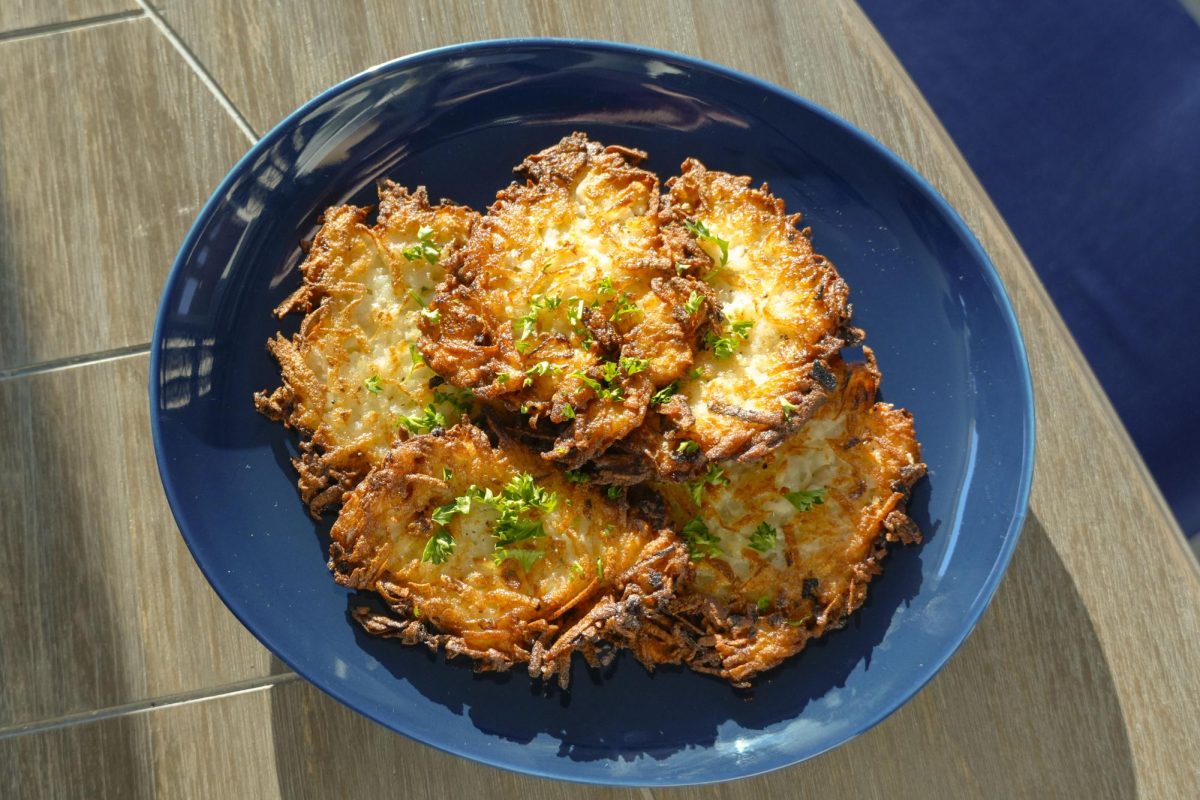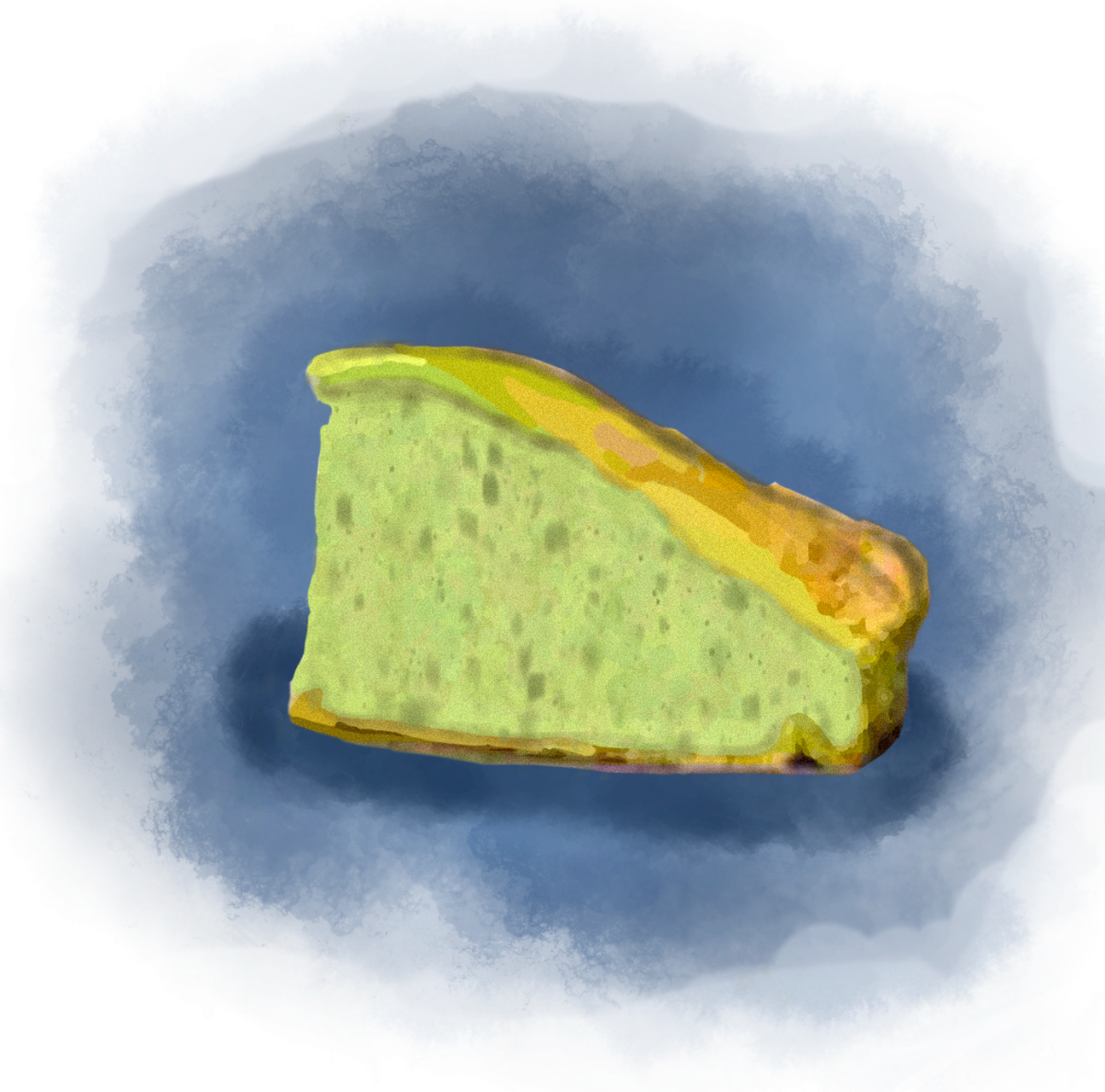To the average person, the smell of garlic, fried plantains, coconut, and cinnamon wafting from a kitchen might not elicit a strong reaction. But to Liani Tirado-Crespo, these scents are much more than a delicious meal. To her, they are family history represented as recipes, passed down from parents to children in an endless cycle. They are reminders of home: Puerto Rico. Often seen wearing a ring of the island’s flag, Crespo is unmistakably proud of her Boricua—another name for a native Puerto Rican—heritage.
Perhaps the most iconic Puerto Rican recipe is mofongo, a savory dish with a distinct round shape that features mashed and fried green plantains. This starchy fruit is abundant on the island, which led to it becoming a staple in most kitchens. As a result, the dish has a rich history, originating from African and Taíno roots and symbolizing the resourcefulness the island’s inhabitants have demonstrated for generations.
“To me, [this dish] shows how, with the supplies we have, we can make delicious meals with even the simplest of items,” Tirado-Crespo told Spark.
“My grandma would be frying fish early in the morning and making mofongo… and that would be my breakfast with a cup of coffee. I would walk to school with my mofongo bowl and a cup of coffee—the breakfast of a champion!” Johanna Crespo Torres, Tirado-Crespo’s mother, told Spark.
Mofongo is more than something to eat;, it is a reminder of fond memories.
“My dad taught me how to make mofongo. He was in the kitchen cooking it, and I just watched over his shoulder because he didn’t trust me to do anything,” said Tirado-Crespo. “I just remember him being in the kitchen dancing to reggaetón, and I could smell the oil and feel the warmth.”
In Puerto Rican kitchens, culture simmers before it speaks.
“The life of a Puerto Rican household is in the kitchen,” said Crespo Torres.
Making such meaningful recipes away from the island makes this connection through food even more important. Even when thousands of miles away in the mainland U.S., food helps Tirado-Crespo and her family stay close to her roots.
“I feel connected to my heritage when cooking [and] using island ingredients that, before we were colonized, my ancestors could grow these ingredients like plantains and coconuts,” said Tirado-Crespo.
Tirado-Crespo’s mention of coconut as a primary ingredient in Puerto Rican cooking is no coincidence. Coconut is used in many traditional desserts, such as tembleque, a delicate, not-too-sweet pudding, often sprinkled with cinnamon.
Tembleque is typically made for Christmas celebrations, as Tirado-Crespo’s father, Oscar Tirado Acevedo, notes, demonstrating the dessert’s connection to warm memories of family. This sweetness—literal and metaphorical—extends to more than special occasions.
“The dessert reminds me of when I would be in my great-grandmother’s kitchen eating what she made,” said Tirado-Crespo. “Mofongo and tembleque taste like nostalgia and happiness and family. They taste warm and comforting.”
Her mother jumps in to share her own special memory of tembleque, in which she became familiar with the recipe through her family friend, Doña Gloria.
“She would make me one every Friday when I would come back from college,” said Crespo Torres.
Tirado-Crespo hopes the tradition continues so these dishes can offer the same comfort and warm memories to many generations to come.
“I would love for my future generations in Puerto Rican culture to still eat these dishes or make these dishes,” said Tirado-Crespo.
In kitchens far from the island, mofongo and tembleque endure—not just as meals, but as a reminder of shared roots. For Tirado-Crespo, they are time machines and love letters, carried through memory and tradition. Passed down from her parents’ hands to her own, each dish becomes an act of remembrance, keeping Puerto Rican culture alive—one spoonful at a time.
Mofongo Recipe:
- 8-10 pieces 1” sliced green plantains
- 1 tsp. garlic, minced
- 2 oz. chicken stock
- 1 tbsp. butter or oil (additional oil for frying)
- Salt & pepper (to taste)
- A handful of chicharrones (or pork rind chips)
- Cilantro (for garnish)
- Cut both ends of plantains and make 2-3 scores on the skin lengthwise. Use a butter knife or your fingers to peel the skin off. Once removed, cut the plantain in 1” slices (more or less depending on how crispy you want the plantain to get).
- Deep fry the 1” slices of plantains until they are golden on the outside and tender on the inside (about 5-8 minutes). Don’t crowd the pan – do separate batches if necessary. Remove plantains from oil.
- Add the fried plantains into a mortar and pestle along with the garlic, stock, butter and seasoning. Break up chicharrones using your hands into small pieces, then add to the mortar and pestle. If you do not have a mortar and pestle, you can use a sturdy mixing bowl and any heavier kitchen equipment you may have, such as a potato masher or a meat mallet.
- Mash all the ingredients until smooth in texture and fully incorporated. (If the mofongo feels too tough, add more stock!)
- Chop cilantro and garnish. You may also add salt and pepper to taste.
Tembleque Recipe:
- 2 (14-ounce) cans full-fat coconut milk
- ¾ cup sugar
- ¼ tsp. salt
- ½ cup cornstarch
- 1 pinch ground cinnamon
- Stir together most of the coconut milk (save 3-4 tablespoons for the next step), sugar, and salt in a saucepan.
- Spoon remaining coconut milk mixture into a small bowl, stirring in cornstarch until dissolved, and pour into the saucepan. Bring the mixture to a boil while stirring constantly, then cook until smooth and thick (about 5 minutes).
- Pour into molds, cover each with plastic wrap, and refrigerate until cold and firm (between 3 hours and 2 days).
- Run a thin knife around the edges of each mold and invert onto serving plates. Garnish tops with cinnamon.









































































































